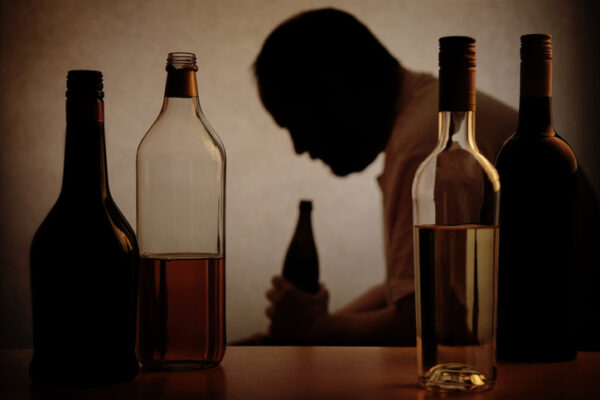
America has a drinking problem, and the statistics are sobering.
In 2020, alcohol-related deaths nationally increased by 25.5% to nearly 100,000, according to a recent article in the JAMA Network. Authors cited increased drinking to combat overwhelming pandemic-related stressors as a primary catalyst for this significant increase. Experts went so far as to say deaths from alcohol are one of the hidden tolls of the pandemic.

With the Rise of AI, What IP Disputes in Healthcare Are Likely to Emerge?
Munck Wilson Mandala Partner Greg Howison shared his perspective on some of the legal ramifications around AI, IP, connected devices and the data they generate, in response to emailed questions.
This largely quiet trend hasn’t grabbed the headlines like the similar increase in drug overdose deaths. Skyrocketing statistics beg the question: Will increased drinking decline as pandemic-related stressors ease and treatment options return? Or is this the new normal?
Whether or not we recognize it, we are all guided by social norms and shared community standards for what behavior is considered generally acceptable. Cigarette use is a great example. In the 1970s, my parents put out ashtrays for guests, even though they themselves did not smoke. Many years ago, cigarettes were socially acceptable, whereas today, they have become broadly rejected.
When was the last time you went to a dinner party where people smoked cigarettes indoors? Similarly, the three-martini business lunch became a thing of the past. I digress.
During the pandemic, a social norm emerged that accepted — or even embraced — drinking alcohol as a coping strategy for the many frightening situations developing each week. Perhaps you noticed the increased clanking of wine bottles on recycling day or how the sidewalk in front of your house looked increasingly like Bourbon Street.
All the while, our kids are paying attention. In a newly released survey from the nonprofit Rise Above Colorado, teens in Colorado are much more likely to report that they have lived with an adult who has a substance-use disorder than they were two years ago.
And I get it. I’ve over-consumed alcohol during extended periods in my life, and my dad was a lifelong alcoholic. We all were in survival mode during the pandemic, grasping for anything that would help. Therapy, treatment, and medical care were much harder to access, but liquor stores were always within easy reach.
How to rethink alcohol consumption
As a communications and marketing expert who works on public health campaigns, I’ve asked myself how we can reverse this trend or take steps to show our children that alcohol or other substance use is not the only coping mechanism available.
Here are the solutions I’ve found:
- Open pathways for communication.
We can begin by talking frankly about the issue, replacing judgment with empathy and negativity with kindness. Only then can we start addressing the serious and sometimes deadly health impacts. The U.S. Centers for Disease Control and Prevention recommends against drinking more than two drinks a day for men and one drink a day for women. And note what the CDC defines as a “drink”: 12 ounces of 5% alcohol by volume (ABV) beer, five ounces of 12% ABV wine, or 1.5 ounces of 40% ABV distilled spirits. In other words, a drink isn’t defined by what you can fit in a glass.
- Make a move toward moderation.
In some cases, people can correct course and moderate their alcohol consumption when they notice a problem with excessive drinking. In other cases, even with outside help, people must stop entirely to limit excessive drinking.
For some, embracing moderation strategies is practical and could even provide harm-reduction benefits. Australian research suggests people could benefit from a process that combines advertisements outlining why reducing alcohol consumption supports good health alongside a specific and practical suggestion to keep count of drinks.
- Consider non-alcoholic wine and beer.
The market for non-alcoholic drinks is growing, and the drinks themselves have vastly improved in just a few years. De-alcoholized wine — real wine with the alcohol removed — tastes much more like regular wine than the fruit juice dupes of earlier decades. No-alcohol beers also come in all the popular craft styles, and their taste is virtually indistinguishable from regular beers.
A decent no-alcohol chardonnay or IPA can be enjoyable to sip after work, either instead of alcoholic drinks or as an alternative to help moderate alcohol consumption. The no-alcohol versions are typically much lower calorie, too. All of these benefits make choosing a non-alcoholic drink easier and certainly carry the potential to help curb heavy drinking.
The first step toward recovery is admitting we have a problem. As a nation, let’s face our alcohol dependency head-on and have an honest discussion about the growing consumption trends. Together, we can gather experts to help address it, find more resources, and make a steady move toward recovery for both ourselves and our children.
Eric Anderson is co-founder of SE2, Colorado-based communication, and marketing agency focused on moving behavior and policy to create sustainable positive change.














